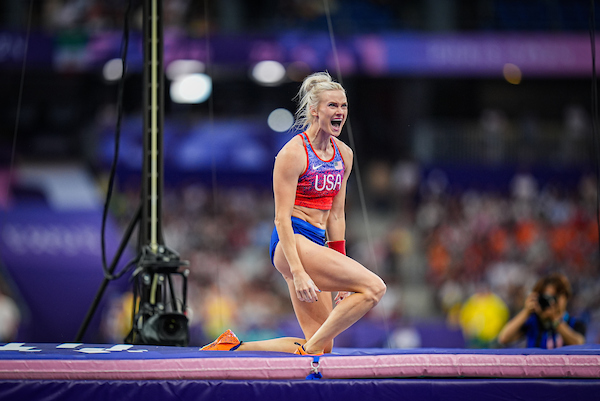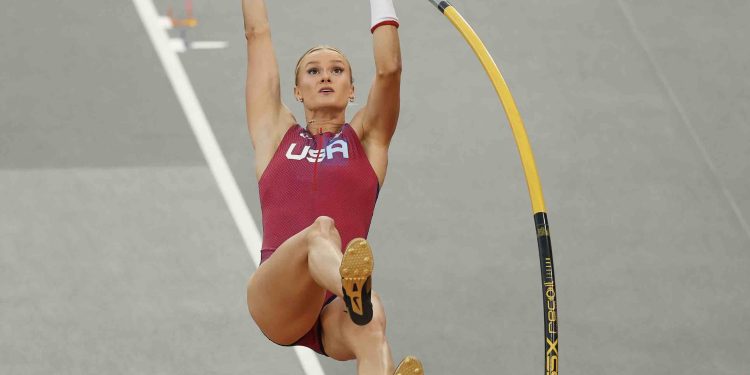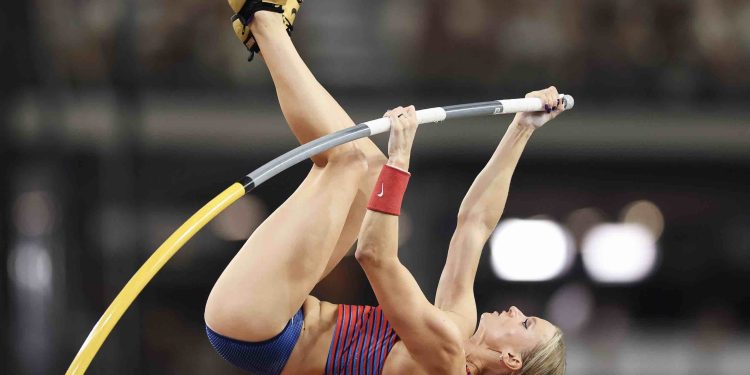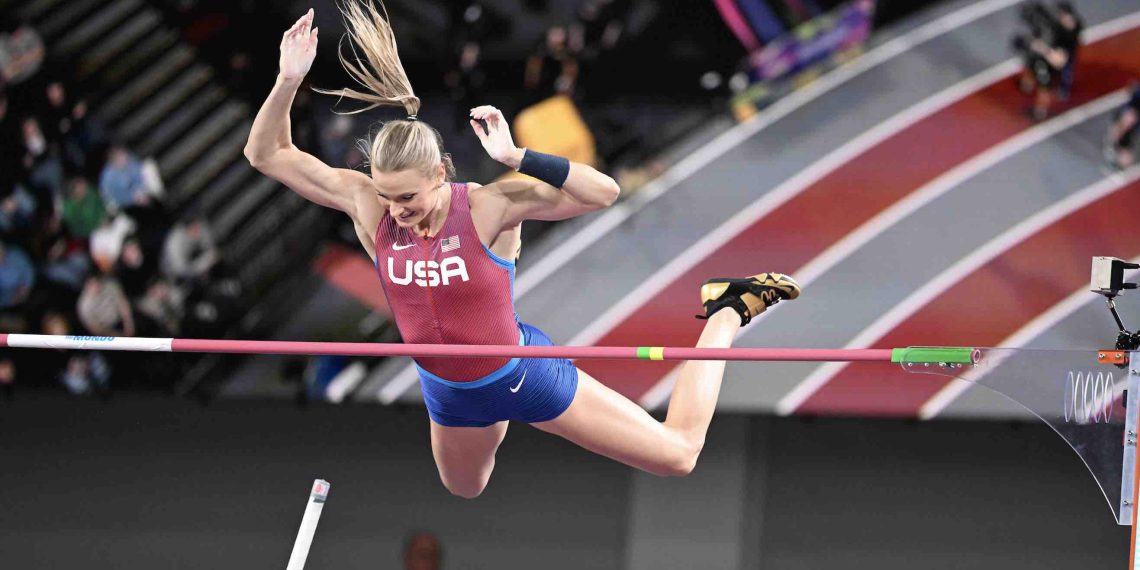Talking pole vault tactics with Katie Moon
In a distance race there are always questions about tactics. Should an athlete run from the front or should they try to win with a perfectly timed late run to the line? There is no right and wrong answer. The tactics in Pole Vault are complicated too. At what height to enter the competition? Then whether to take every bar or to save energy by skipping a bar. In the first article, Katie talked about the challenges of a long championship competition when you might clear a bar and wait 45 minutes before it is your turn again. That adds to the intrigue!
RelatedPosts

In the Paris Olympics in the qualification round Molly Caudery, a 4:90 jumper, entered the competition at 4:55, failed to clear it and was out. Every other athlete had entered the competition at the lower height, Was it just a bad day at the office or was it an error of judgment? We may have opinions but only Molly knows the answer and I haven’t spoken to her about it!
I was interested in Katie’s approach and whether she has a height at which she always comes in: “No, it really just depends how the season is going and how I am feeling on the day. I’ve come in anywhere from 4:40 to 4:60 and I even I once opened at 4:70. So it really just depends on each meet. Each warm up is going to tell you something different on that particular day. Hindsight’s 2020, right? In championships, especially in Olympics, I am aware that there’s just so much more emotion and adrenaline. Personally, I like to err slightly on the side of caution, but still keeping it close to what I normally come in. I usually come in about 4:50. So it’s a toss up: do I come in five centimetres higher 10 centimetres lower? When you look at it on a metre stick 5 cm is nothing.

“For me 4:20 doesn’t make sense because 4.20 and 4.40 are going to feel like the exact same bar when I have a certain pole in my hand. Once you get up above 4.50, then there’s a little less room for error. I’ve come in above 4.50 more than once, but it really just requires you to be on your game. With the emotion of the championship, me personally, I like to err on the side of caution and choose the lower bar, if I’m between 2 starting heights”.
In the Paris Olympic final the opening bar was 4.40 and 18 or 19 vaulters started at 4:40 with just Eliza McCartney waiting for 4.60. “Yeah, I thought that was interesting”, Katie said, “especially just with how the prelim had gone but, you know, at the end of the day, it really is just when you warm up, it’s about feeling comfortable on the runway, and also figuring out which pole to start on. So figuring out which height to come in at in pole vault is one big equation! It is also the case that if you’re gripping high on a big pole, you’re going to be so high in the air that whether it’s 4.40-4.50, 4.60 or 4.70, you’re going to be over that bar”.

You thought it was just about grabbing a pole and running down the runway – but there is a lot of different things to think about!
I remember once Blanca Vlasic telling me that she had never cleared 2m in training and had never attempted it because practice was all about technique and confidence. I wondered if it was the same in pole vault. “I actually very rarely do that [attempt high bars] because in training I’m on much, much smaller poles. Just really repping out the technique, so I am going to be jumping much lower. But just by dialling that in, when I get into a competition and have the adrenaline and get on the pole, that makes sense for how I’m moving that day. I’ll be much higher in the air. But, yeah, in training, I’m jumping significantly lower because I can’t quite muster up that adrenaline and meet sensation. And to be honest, I very rarely know where the bar actually is. A lot of times Brad [Brad Walker her coach] will throw it up to something and I would never actually clear it because I’m hitting it on the way up, but it’s really just about getting that confidence, getting off the ground the same way every time. And then when I go to a meet, that’s when good things happen”.
Author

Since 2015, Stuart Weir has written for RunBlogRun. He attends about 20 events a year including all most global championships and Diamond Leagues. He enjoys finding the quirky and obscure story.
View all posts






















